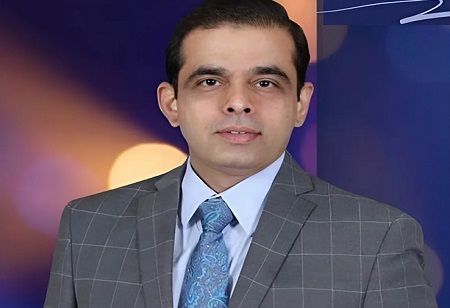Dr. Ajay Sharma, Chief Medical Director, Eye-Q Vision

Dr. Ajay Sharma engaged in a conversation with India Pharma Outlook magazine in order to answer queries on the advantages and progress of LASIK surgery in the Indian eye care industry. Dr. Ajay Sharma has been a key figure in Indian eye care for 25 years. He studied medicine at PGIMS, Rohtak, earning his MBBS in 1990 and his Master of Surgery in Ophthalmology in 1994. He worked as a Senior Resident at Safdarjung Hospital, New Delhi, in 1995. Specialized Training: In 1996, he trained in advanced eye surgery techniques at LV Prasad Eye Institute, Hyderabad.
In your opinion, what is the current state of the eye care sector, and what notable trends or changes are occurring within it?
The eye-care sector in India is booming. Some eye-care chains have gained considerable recognition and have established themselves all across India. Developments have also been seen in terms of private practice and we can see huge growth in infrastructure as well. Everything is being done for the benefit of the patient. A notable trend that has been observed is that post COVID-19, consumers are opting for the best in class services in healthcare. No matter how small the treatment might be, people want the best treatment available.
Can you explain the procedure of LASIK surgery in detail, including pre-operative preparations, the surgical process, and post-operative care?
LASIK is done for spectacle correction. This is one of the procedures with which people are able to get rid of their glasses. This is primarily a cosmetic procedure and generally does not come under TPA. In certain conditions where the patient has high power glasses (7 or 8), it is covered by insurance and becomes a therapeutic procedure. LASIK is only done on the patients who are adults and require a fixed refractive correction. The treatment gets done after conducting some mandatory tests and only after a physician approves of it. Here, topography of the cornea is inspected by the physician. Even at the last moment before starting the procedure, the physician will look at the retina of the patient to take the final call about the surgery. Most people with myopia have big retinas which can have degenerations; Physicians need to correct that before carrying on with LASIK. Only after retina correction is done and the physician is satisfied with the state of the patient, LASIK is executed. All the patients who want to undergo LASIK and are on contact lenses, they are told to remove that one week prior to the procedure and putting antibiotic and anti-inflammatory drops in the eye. There are various pre-operative and post-operative procedures that are followed by healthcare practitioners while performing LASIK. There are three kinds of eye drops that are required to be taken by the patient after the treatment and not following that might lead to blurry visions. After conducting the treatment, it generally takes 3-4 days for the patient to get back to normal life.
Can you provide insights into the anticipated visual outcomes following LASIK surgery, including factors that may affect long-term results?
95 percent of the patients that are undergoing LASIK surgery have not been reported to have any effects in the long run. Patients need to take a near vision glass by the age of 40-42. This is generally common for most of the people now. When patients get older and eventually start suffering from cataract, they need to go see a physician for that treatment. Here, it is very important for patients to show their LASIK history to their physician. It becomes very easy for the physician to determine the power of the lens that needs to be given to the patient after cataract surgery. However, it is not always that a patient needs to go for LASIK. There are other kinds of treatment that are also available it is always advisable for patients to consult a physician before taking any decision. A lot of information about eye treatments are there all over the internet but the best practice is to take the consultation of a physician and do what he thinks is right. However, after LASIK is done, few patients have reported minor disturbances in sight and dryness of eyes which is common but nothing to be afraid of. Various new medications and drops have emerged over the years and following the steps told by the physician and application of the drops prescribed is the most effective way to get over it.
How does LASIK surgery typically address short-sightedness and long-sightedness, and what is the success rate for these conditions?
LASIK surgery is primarily done to correct myopia in patients. Although, the procedure can be done to correct both short and longsighted disorders but 80-90 percent of the patients who come in for LASIK have myopia. The correction of sight with LASIK has been seen to be better for patients who were suffering from myopia. However, results have also been seen for patients with hypermetropia who have undergone LASIK and even the patients who have suffered from astigmatism have reaped result from LASIK procedure. However, there are cases where patient is a in serious condition which cannot be fully corrected. In these cases, physicians inform the patient about the probable outcome of the treatment before stating off with the processes.